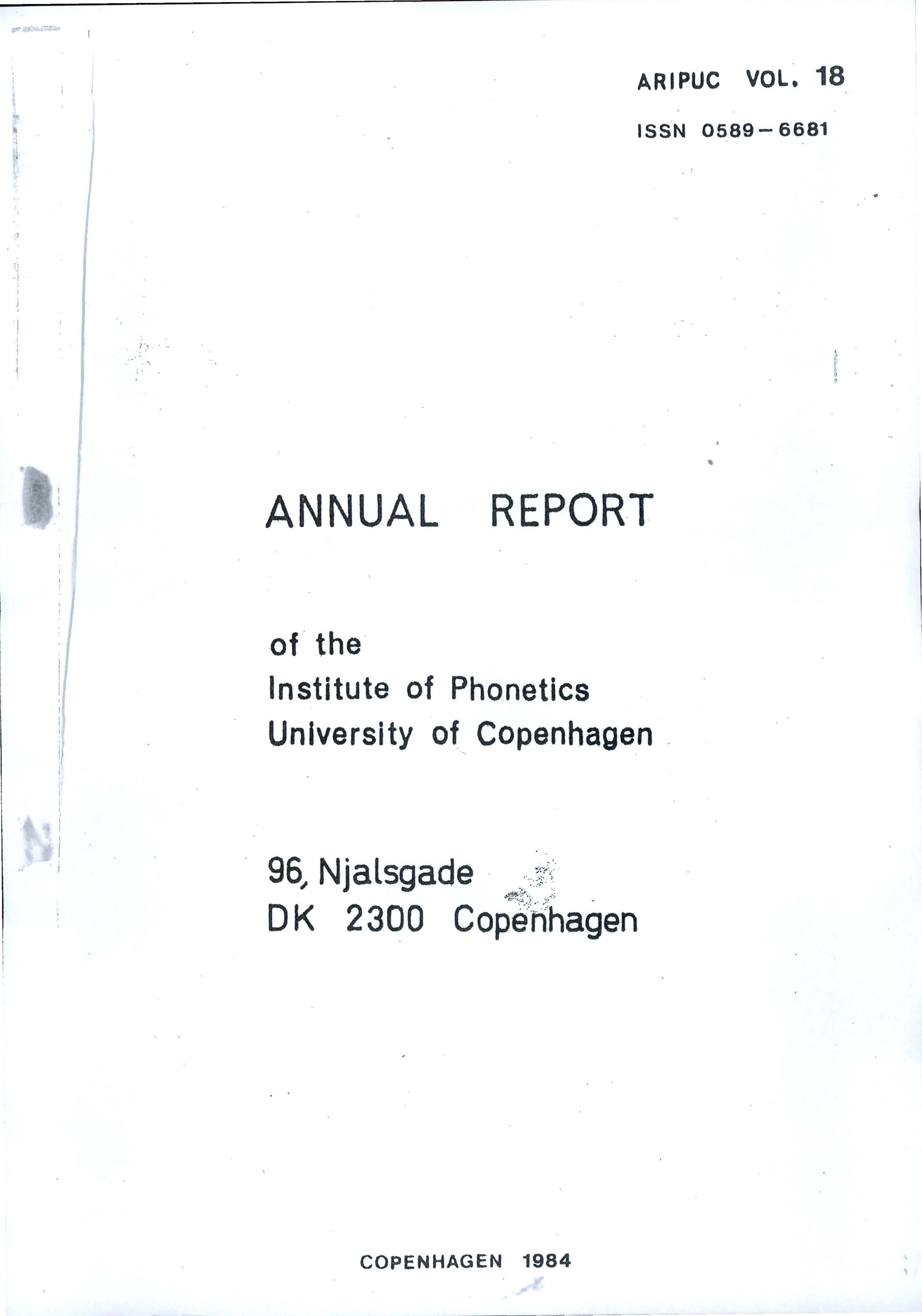Variability and invariance in Danish stress group patterns
DOI:
https://doi.org/10.7146/aripuc.v18i.131794Abstract
Three aspects of the fundamental frequency (Fø) pattern associated with the prosodic stress group in Standard Danish are examined in acoustic analyses of recordings by four speakers. (1) Evidence is presented in favour of previous statements to the effect that short stress groups will have Fø patterns which are truncated rather than compressed editions of those found with longer stress groups. (2) The shape of the Fø pattern can be considered basically invariant (for a given speaker) and independent of the segmental structure of the stress group, but its surface manifestation is modified by intrinsic Fø level differences between vowels of different tongue height, and by the intonational context. (3) Fø patterns in extremely long prosodic stress groups are investigated: With one speaker the falling slope is decomposed into a succession of two shorter ones, with a distinct partial resetting between them, which together describe an overall declination, much reminiscent of the way long sentence intonation contours behave. With three speakers the Fø course through the unstressed syllables is more akin to a mildly undulating wave. The initial fall levels out and falls again, or performs a slow fall-rise-fall.
Downloads
Published
How to Cite
Issue
Section
License
Copyright holder author

